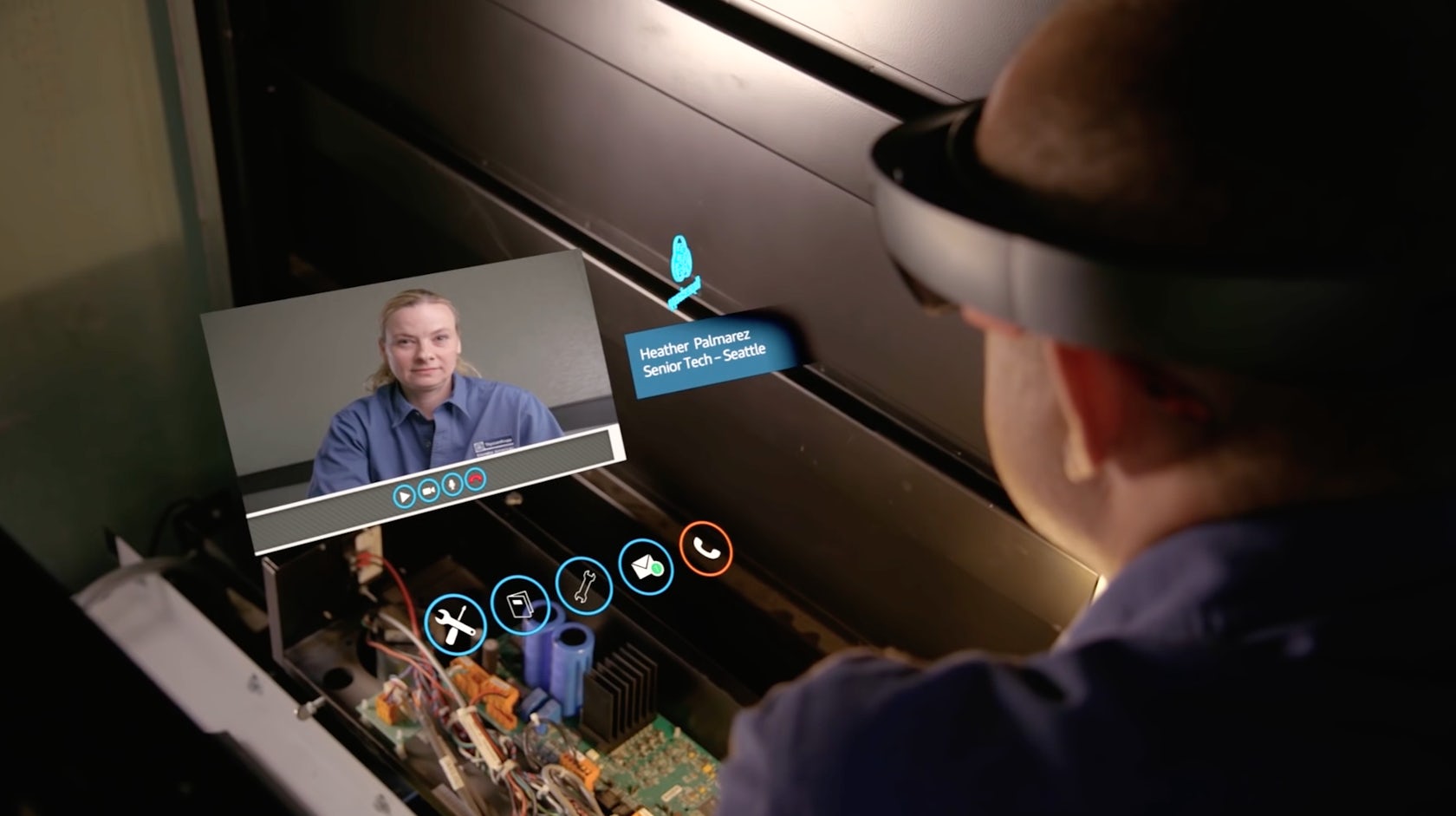2016 has been a big year for augmented reality, with games like “Pokémon GO” acclimating ordinary smartphone users to the idea of the digital world spilling over into the real one. This concept, however, is not all fun and games. The German steel conglomerate well-known for its elevator manufacture, ThyssenKrupp recently unveiled plans to equip its lift repair workers with Microsoft HoloLens mixed-reality smartglasses, which will allow them to bring digital models and other useful forms of information directly into their fields of vision when they are on the job site. The company claims this technology will make elevator repair safer and more efficient than ever before.

All images courtesy ThyssenKrupp
“Using HoloLens, service technicians will be able to visualize and identify problems with elevators ahead of a job, and have remote, hands-free access to technical and expert information when on site — all resulting in significant savings in time and stress,” the company explains on its website. “Initial field trials have already shown that a service maintenance intervention can be done up to four times faster than before by using the device.”

When technicians don the glasses, they see a digital menu overlaid on top of their fields of vision. From here, they are able to access all sorts of helpful information, from 3D visualizations of the elevator they are working on to information regarding the elevator’s service history. This allows them to pinpoint the issue without rooting through old, neglected files or worse: dangling from an elevator shaft with a flashlight. In many cases, technicians will have all the diagnostic information they need before they ever reach the job site.
Via YouTube
Technicians are also able to call for backup support via video conferencing. The glasses allow the onsite technician to share their visual field directly with an off-site expert, bypassing the complicated descriptions of circuit boards that used to characterize these types of calls. All in all, the product aids in efficiency, ironing out the petty frustrations that once stood in the way of technicians applying their expertise to the problems at hand.

As ThyssenKrupp stresses, a world with more efficient elevator technicians is a more efficient world, full stop. “With elevators transporting over one billion people each day, the service industry has a critical role to play in keeping cities moving,” explains Andreas Schierenbeck, CEO of ThyssenKrupp Elevator. “Our goal is to dramatically increase efficiency, raise elevator up times and speed up service interventions to ensure mobility equipment is always running as it should, providing each passenger with the safest and most comfortable travel experience possible.”

ThyssenKrupp’s partnership with Microsoft builds on the success of MAX, the company’s predictive maintenance product, which was launched last year. MAX has already cloud-connected thousands of elevators, supplying the data that technicians will now be able to access via HoloLens.









